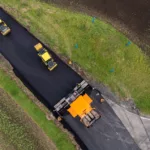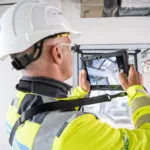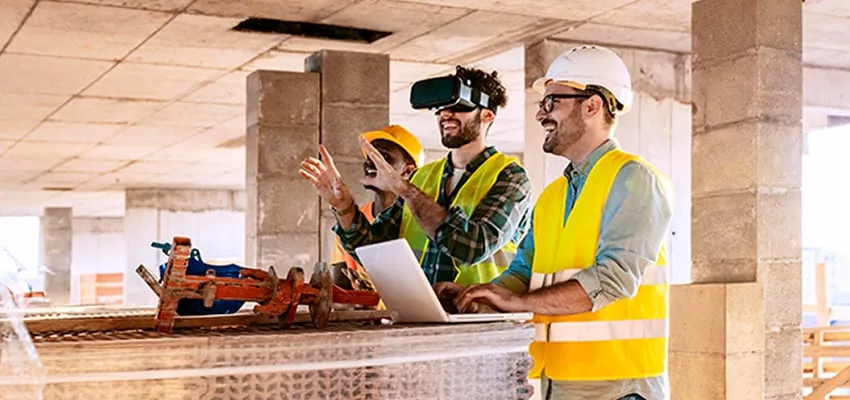
How artificial intelligence will soon be (and should be) in the mix on your construction site
ChatGPT, autonomous driving and Industry 4.0 – artificial intelligence is on everyone’s lips. To find out in which areas AI is already being used in construction, what we can expect in the future, and how companies can use it as a booster, let Jan Köster, product manager at 123onsite.
Here’s how you can already use AI in construction
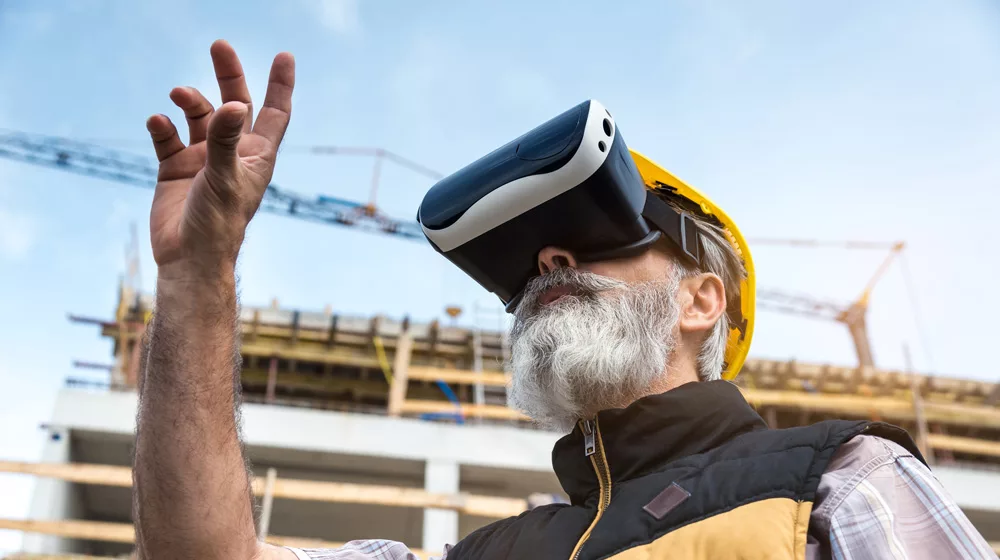
AI – the abbreviation stands for Artificial Intelligence. Essentially, AI consists of computer software and algorithms. Today, AI is increasingly being used for innovative technologies – also by construction companies. After all, in many areas AI can already be used successfully in the construction industry – and it’s already proving to be extremely useful. For example with
- Voice recognition – you can easily speak into the app and the program will take over the content in the note feature. Voice recognition programs also usually cope very well with foreign languages. For example, this makes it easier for you to coordinate your international employees on the construction site. The quality of speech-to-text conversion is getting better and more reliable with the use of AI.
- Computer vision including VR allows drawings and plans to be created and even operated virtually.
- Robotics on the construction site: Construction robots for individual tasks or completely autonomous construction sites are likely to change the construction process in the future. Under laboratory conditions in research, this already works quite well: for this, AI-supported devices are used to communicate with each other. In the future, there may be complete construction sites that use autonomous machines and thus function like manufacturing plants in the industrial sense.
- Generative design is a process enabled by AI in which different variants for a design are created automatically. In this way, designs can be continuously adapted and optimized to specific specifications.
- Engineering: With generative design, CAD or BIM, AI-supported tools are available for engineering.
- PM and planning: bottlenecks in materials or manpower? With AI parts, for example, the ERP suggests efficient alternative strategies for Task management Task management
- Construction: Keeping alternative construction plans on hand and adapting them on an ongoing basis is unusual in traditional practice – and also not entirely feasible. By using AI, innovative processes become possible and workflows become significantly more efficient.
- As-built recording of construction progress: Today, many things are also possible when it comes two recording and Construction documentation. This means that survey vehicles equipped with sensors and cameras can automatically drive along routes and record everything. This documents the construction progress not only as an image, but as a data stream.
- Automated data acquisition: Whether it’s about Time tracking, equipment runtimes or your Construction diary – with automated data acquisition, everyday life on the construction site simply runs better, more accurately and faster.
- Accident avoidance: Autonomous driving on construction sites or elsewhere is also controlled by AI. For consistent accident prevention, assistive systems that use AI to prevent accidents are significantly more accurate and safer than human-operated equipment.
123onsite already provides you with what your construction company needs
As a software manufacturer, we think: You don’t have to equip everything with artificial intelligence to make it better. For many purposes, conventional software is sufficient. At 123onsites, we work every day to make our products better for our customers. In concrete terms, this means that we optimize programs and add new features. It is the task of our programmers, as software manufacturers, to integrate advanced technologies in such a way that they make sense for users in their processes. The software is designed to enable efficient processing of tasks.
What is AI – and how does it differ from conventional software?
But when is a software actually intelligent, or better said: from when on? Because:
Even a simple if-then link, can act intelligently and provide real smart support.
That’s why we shouldn’t automatically be worried about AI: the robot vacuum cleaner at home is a real help, but it probably won’t start a revolution. Nevertheless, the use of AI is a significant innovation. It will change all areas of our lives, from medicine to entertainment to industrial production – and even construction.
Two advantages of AI
- It learns independently and thus becomes better and better
An AI is in principle capable of getting better over time by applying itself. This aspect of AIs is therefore also called machine learning. This ability of artificial intelligence is an advantage for users: it is not programmed once and remains at the same level. Instead, it is getting better and better – or at least has this claim. - AI can oversee Big Data and evaluate it quickly
AIs can also oversee large volumes of data – called Big Data – and analyze them in a very short time. AIs recognize patterns and deviations in data volumes that are confusingly large for humans.
AI and data protection are important topics – also for construction companies
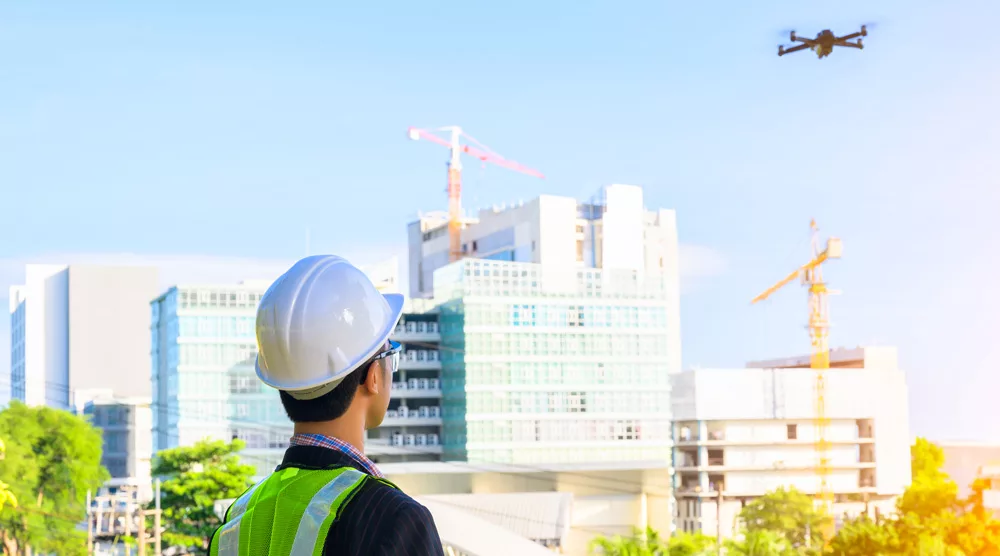
Classic digitization hurdles in the construction industry are mostly of a technical nature, but when it comes to the use of AI, it is more human reservations and fears that act as a deterrent at first. Again and again, the topic of data protection also plays a role. In the construction site sector, for example, the question of data protection arises when cameras are used for video surveillance. This is because the camera can theoretically detect not only who is visible, but also what individual people are doing.
It is imaginable that a video AI could evaluate work performance or create motion profiles.
Then, for example, frequent cigarette breaks without clocking out or other patterns could be quickly identified. This can then lead to employees feeling that they are being monitored. It is therefore the task of the company to take appropriate precautions and to take employees along on the path of digitization right from the start in order to create acceptance or even enthusiasm for the use of new technologies.
How to prepare your business for AI in construction
Digitization is a prerequisite for the use of AI. That’s because for software, such as analytics programs and machine learning with artificial intelligence, data quality is critical. Thinking about how you can use AI? Then the first step is to move from analog to digital processes for your business. The right software is an important requirement for this. Nowadays, all data is stored in the cloud. For you, working with the cloud means first and foremost: no software to host on your servers, but software as a service.
First steps: How to make your company AI-ready
If your construction company’s data is stored on its own hard drive in a wide variety of data formats, even an AI cannot access the data. Even the best program is of little use if the data is stored somewhere in Excel tables or similar structures.
It is similar with a diversity – or variety – of data. This is because with diverse or various data, the AI can learn from a large amount of different data points. This leads to greater accuracy of the model. With limited diversity, on the other hand, an AI has very limited room to maneuver with respect to information. The higher the quality of the data, the better an AI can work with it. Completeness, quality, and diversity are the qualities that characterize a good data set for AIs. If you are thinking about using AI in your processes, the first step is to create a basic digitalization of your business processes as well as a reasonable data basis and data quality.
Bottom line:
AI will also play an increasingly important role in construction. It doesn’t always have to be autonomous excavators or drones: At 123onsite, we will offer AI wherever it really makes sense – after ensuring that data protection is respected and that the technology is used transparently and responsibly.
You still have questions about this?
We have the answers!
: /


